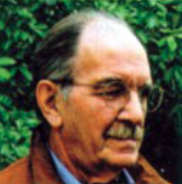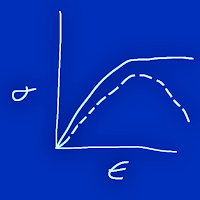The MI wins, hands down.
Why?
A seismic story of the Diablo Canyon (and some other) nuclear power plants. Plus some other geo-disasters.
In the Geological Sciences we were still puzzled over the worldwide distribution of seismicity because the plate tectonic model had yet to be discovered. Benioff had much earlier recognized dipping zones of earthquakes, which we now call subduction zones, off the coast of South America and elsewhere, but there was not yet an overarching theory to explain how these were related to features like the San Andreas, which we now recognize as transform fault necessary to account for the plate motion produced by subduction. As I recall this was an era in which Clarence Allen at Caltech had pronounced that, based on the widespread nature of aftershocks in Chile, a large earthquake could occur anywhere in California. I don't recall the reference, but I do remember the slide he would show where he overlaid the aftershocks of the Chile earthquake of 1960 on a map of California. The entire state was filled with earthquakes.
 |
| Victor Hugo Benioff |

It is universally true that earthquakes are the result of differential slip on faults. However, in many areas, such as most of the eastern U.S., the identification of the causative faults giving rise to seismicity is problematic. To accommodate this uncertainty in fault location..... SSHAC 1997 NUREG CR-6372The SSHAC process urges, not surprisingly given its adherence to this non-mathematical doctrine, even greater and better funded attempts to seek "causative" faults in the hidden depths. All of this follows a fifty year old idea that earthquake forecasting can be carried out using a model such as:
 Of all the professors over
the years Nick Ambraseys was my favorite. Greek by birth, he brought some Meditteranean sunshine into the lecture hall on those grey drizzly days of the mid sixties in
South Kensington. He made it clear that he thought things were pretty simple
and he invited us to see it that way too. “Particle velocity? You know that
already, maybe you just haven’t thought about it. If you can know the strength
of the rock, and the shear wave velocity doesn’t vary much, so…” and he would
turn to the blackboard and make a little sketch and it was just like he said,
easy. He liked solutions to problems too. He was working on a way to use steel
straps from packing crates to hold mud brick houses together, like something
you would see in years to come in “The Whole Earth Catalog”.
Of all the professors over
the years Nick Ambraseys was my favorite. Greek by birth, he brought some Meditteranean sunshine into the lecture hall on those grey drizzly days of the mid sixties in
South Kensington. He made it clear that he thought things were pretty simple
and he invited us to see it that way too. “Particle velocity? You know that
already, maybe you just haven’t thought about it. If you can know the strength
of the rock, and the shear wave velocity doesn’t vary much, so…” and he would
turn to the blackboard and make a little sketch and it was just like he said,
easy. He liked solutions to problems too. He was working on a way to use steel
straps from packing crates to hold mud brick houses together, like something
you would see in years to come in “The Whole Earth Catalog”. |
Afghan "terrorist" country today,
peaceful in 1963 when I took my long bus ride through the Hindu Kush |
 |
| Ambraseys first law of earthquake engineering, Imperial College, 1965. Solid line good, dashed line, bad |
While I understand that many structural fragilities are described in terms of PGA, its use only leads to dangerous mischaracterization of earthquake risk....5% damped response spectral acceleration (sa) is also a common parameterization of shaking intensity. While SA is certainly more useful than PGA, there are serious concerns about using it to predict structural demand. In particular, sa is based on a linear analysis of a structure about its undeformed state. However, there will always be significant ductile yielding prior to catastrophic failure of a structure, and it is more meaningful to use parameters that better characterize a structure that is in its highly deformed state. For example, structures that yield plastically have much lower effective stiffness and much higher effective damping than is typically assumed in current practice.